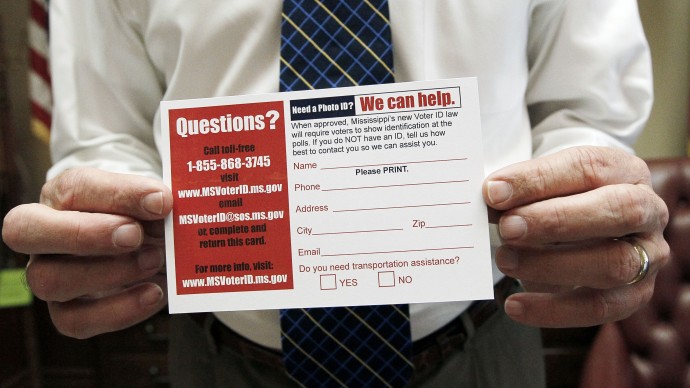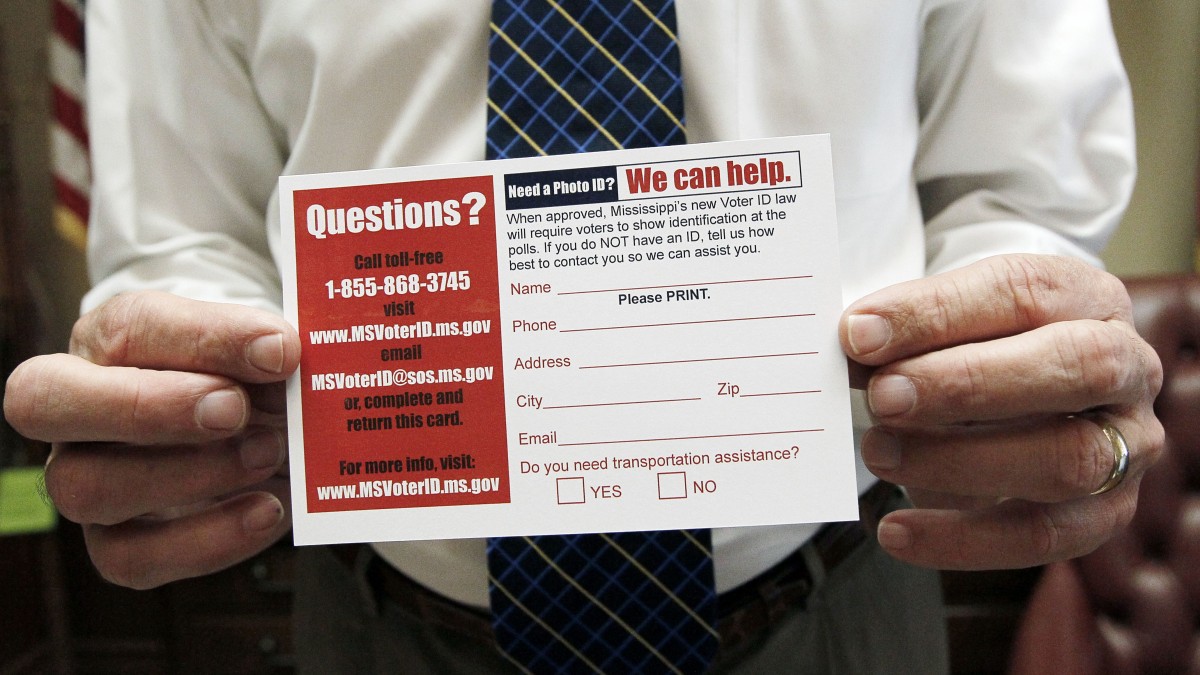
(Mint Press) – Virginia’s House of Delegates passed a voter identification bill on Wednesday — the new strict photo identification requirement will bring the state in league with other strict photo ID states, such as Georgia, Indiana, Kansas and Tennessee.
The legislation now heads to Gov. Bob McDonnell’s (R-Va.) desk, where it is likely to be signed into law. Despite a call from Democrats to veto the bill, three-quarters of all Virginians favor a photo ID law, according to Quinnipiac.
However, the actual implementation of the law is questionable. Virginia is a state that historically discriminated against African-American voters. As such, in accordance to the Voting Rights Act of 1965, any changes to the states’ voting laws must be authorized by the United States’ Attorney General or the U.S. District Court for the District of Columbia under a Section Five preclearance.
Four other states — Mississippi, Texas, Pennsylvania and Wisconsin — have had similar laws tabled due to lack of preclearance or because of state-level courts’ intervention.
Virginia’s photo ID law came a year after Virginia expanded the number of acceptable forms of identification for the 2012 elections. Utility bills and paychecks were accepted as valid forms of identification under the 2012 law.
The Republicans’ war against the vote
In December 2012, Virginia State Senator Charles “Bill” Carrico, Sr. introduced SB 723 to the Virginia Senate. The controversial bill would award one electoral vote to the presidential candidate that wins each of Virginia’s 11 congressional districts. The final two votes would go to the candidate that wins the plurality of the districts.
Virginia is one of the most gerrymandered states in the Union. The vast majority of the state’s Democrats are contained in just three districts. Under this model, Barack Obama — who beat Mitt Romney by four percentage points in Virginia in 2012 — would only be entitled to four of Virginia’s 11 electoral votes. At a minimum, the Republican candidate will always get at least two votes under this scheme.
Across the nation, Republican strategy makers are working to minimize the grave realities of 2012 — that the Republican Party does not reflect the changing demographics of America and the party is unlikely to regain national power without significant change — by radically attempting to change the rules.
In 2012, Pennsylvania State Senate Majority Leader Dominic Pileggi proposed that the state’s electoral votes be distributed by share of the popular vote, instead of “winner-takes-all.” Under this model, Romney would have won eight of Pennsylvania’s 20 electoral votes in 2012. In 2011, Pileggi suggested that the state should award its electoral votes individually based on whomever won each of Pennsylvania’s 20 congressional districts.
The 2011 plan was abandoned because it was feared that such a plan would force Obama to focus on individual districts, which would put enormous pressure on incumbents.
In Ohio, Secretary of State Jon Husted — who, during the 2012 election, restricted early voting despite a court order, and ordered numbers of provisional ballots to be thrown out — has recommended allocating the state’s electoral votes in a manner similar to Pileggi’s plan. In this case, Ohio would have given 12 of its 18 electoral vote to Romney.
Throughout the nation, there have been repeated pushes to limit the voting access of minorities and traditionally Democratic voters, particularly in swing states. As Republicans learned that the traditional formula that elected Ronald Reagan — a predominately White base — is no longer effective in electing presidents, and as Republicans learned that they had less than 25 percent support from the Latino community and less than five percent support from the Black community, the call to “game the system” has grown louder and louder.
REDMAP, or the Redistricting Majority Project, helped the Republicans keep the House, despite Democrats receiving more votes in Representative races. As stated on the REDMAP website: “Aggregated numbers show voters pulled the lever for Republicans only 49 percent of the time in congressional races, suggesting that 2012 could have been a repeat of 2008, when voters gave control of the White House and both chambers of Congress to Democrats.”
“But, as we see today, that was not the case,” the excerpt continues. “Instead, Republicans enjoy a 33-seat margin in the U.S. House seated … in the 113th Congress, having endured Democratic successes atop the ticket and over one million more votes cast for Democratic House candidates than Republicans. The only analogous election in recent political history in which this aberration has taken place was immediately after reapportionment in 1972, when Democrats held a 50-seat majority in the U.S. House of Representatives while losing the presidency and the popular congressional vote by 2.6 million votes.”
The Republicans currently enjoy a 32-seat majority in the House, and the House is not projected to be competitive again until 2022.
However, there are reasons to think that these efforts will ultimately fail.
Chanelle Hardy, a vice president for the National Urban League, told an audience at the Center for American Progress that, as conservatives had suspected, there was a drop-off in enthusiasm among the African American electorate between 2008 and 2012, as reported by TalkingPointsMemo. “Unfortunately for those Republican strategists’ plans, however, other Republicans in legislatures across the country were on a quest to impose restrictions on voting, chasing the ghost of in-person voter fraud. Those Republican legislators flipped a switch with the African American vote.”
“We’d been struggling for many years in our communities with how we make the argument that our parents and grandparents had handed down to us: ‘you must vote, because people fought and died for you to have the right to vote,’” Hardy said. “It starts to become a little less motivating the further away you get away from those really visceral memories of what it took to get to the polls. But then you bring back a 35-state assault on our ability to vote and it starts getting really reminiscent. All of the things our parents were telling us and our grandparents were telling us become visceral to a new generation.”


